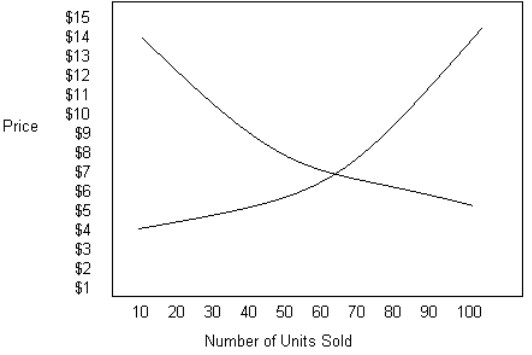The
Economics of the Stock Market Pt. 1
Understand the concepts that move the market:
Supply and Demand
"The law of supply and demand is more
important than all the analyst opinions on Wall Street."
- William J. O'Neil
The price of everything in our
capitalist society comes down to a simple equation - the
interaction of supply and demand. And the stock market is no
exception. In fact, the law of supply and demand is probably
more visible in the stock market than in any other market.
Consider your neighbourhood
supermarket. There the price of carrots or a can of soup may
seem unfathomable. That is because in most cases, the famous
invisible hand of Adam Smith controls prices. We do not know all
the details that have gone into determining the price - the
weather in growing areas, the incidence of insects that destroy
crops, the scarcity of tin and its effect on the price of cans.
We cannot simply draw a chart
to see where the price of a can of soup is and where itís going.
They just donít make soup charts or carrot charts
although
such information may be available to farmers and grocers in
specialized publications.
But the stock market is different. The prices change quickly
through a constant auction process. The interplay of buyers and
sellers can be seen in stock charts. These charts, as we shall
see, represent the law of supply and demand in action.
But first, letís get back to
basics. Some wags have said that economics is an inexact
science, nay, even a dismal science. Ask an opinion of ten
different economists and youíll get ten different answers.
Economics is held by many to be in disrepute. Or at least arcane
and incomprehensible. But what theyíre talking about is what is
usually known as macro-economics - an attempt to look at the big
picture. And that usually involves politics.
What economists of all stripes
universally agree on though, is micro-economics. The building
blocks and foundation of economics - the law of supply and
demand. Call it Economics 101. In this writerís opinion, it is
the only economics that matters because, at core, it explains
everything, even the diverse opinions of the macro-economists.
How can that be? The opinions of the macro-economists depend on
certain assumptions, and given these assumptions are correct,
their conclusions are correct. The problem is different
economists make different economic assumptions.
So letís get on to the only
economics that matters - micro-economics. For those familiar
with the subject, it will be a handy refresher. For novices,
the explanation should be clear and easy to follow and lay the
groundwork for parts two and three of the article.
Economics 101
In a nutshell, all other
things being equal, a seller will prefer to get a higher price
for his product rather than a lower price. And conversely, a
buyer prefers to pay less for the goods he buys rather than
more.
Thatís it. Lesson over.
Class dismissed!
What, you say? Thatís it? But
when I took Economics 101 in university they gave us a big huge
textbook, hundreds of pages of excruciating boredom!
That may well be, but the
above lesson is the essence of economics. Everything else is
elaboration on this theme. So letís elaborate briefly.
A key part of the lesson is
ďall other things being equalĒ. Thereís the rub. They never
are.
Letís consider the concept of
supply. The law of supply says that sellers prefer higher
prices. One corollary is that, if prices rise, more sellers are
attracted to the market, increased supply will be available, and
competition for customers will pull prices down again.
Suppose there are a certain
number of people making the economistís favourite product -
widgets. Theyíre selling at a certain price, but the widget
makers realize that people really like widgets and that they can
raise the price of widgets and still sell them all. So they do.
What happens now is that
potential widget makers who found the previous profit level of
widget manufacturing to be uneconomic will now start making
widgets. The supply will increase. But people donít want any
more widgets than they did before, so some go unsold. In order
to sell all their widgets, the manufacturers start lowering
their prices.
Letís look at it from the
demand side. People really like widgets so the manufacturers
raise prices. They still sell all of them. But they get greedy
and raise the prices even more. Now some of the widget consumers
say ďForget it! Iím not paying that high a price for widgets.Ē
So manufacturers are left with unsold widgets and are forced to
reduce their prices to sell them all.
This interplay of buyers
wanting to pay less and sellers wanting to charge more is the
law of supply and demand in action.
It explains why stores put
things on sale when they are not selling well. The rationale is
that a lower price will induce more people to buy. It also
explains why a shortage of a product, say oranges because of a
bad crop due to unseasonable weather, causes the price to rise.
With lots of oranges (supply) in the market, the growers must
charge a certain price to sell them all. But some of those
consumers of oranges are actually willing to pay more for their
oranges. Not everyone, but some. When the supply falls because
of bad weather, the orange growers donít have to worry about the
people who only want cheap oranges. They can charge a higher
price because the number of people willing to pay the higher
price will buy all of the smaller number of oranges. But they
canít raise the price indiscriminately. If they raise the price
too much, theyíll still be stuck with unsold oranges.
This interplay of buyers and
sellers can be graphically depicted as shown below.

The line sloping from the upper left to the lower right is
the demand curve. The line sloping from the lower left to the
upper right is the supply curve. They show that widget
manufacturers are willing to produce more widgets as the price
goes up. And conversely, widget consumers want to purchase more
widgets as the price goes down. Equilibrium, in this example,
is 65 widgets at $7.
If widget manufacturers charge a higher price, they will be
left with unsold widgets. If they charge a lower price, the
widgets will sell out quickly and there will be a shortage. So
whenever a price different than the equilibrium price is
charged, someone will be unhappy. Interestingly enough, it is
not the people you might expect to be unhappy. If the price is
too high, producers are unhappy because they are left with
unsold stock and high inventories and must cut back production.
If the price is too low, consumers are unhappy because they
canít get all the widgets they want.
Putting this into numbers, if the price charged is $10, only
30 widgets will be sold. Manufacturers produced 65 and are
stuck with 35 left over. If the price is only $5, widget
consumers want 100 widgets but can only get 65.
So how, you might ask, do prices change? Prices change when
the whole supply or demand curve shifts. If a successful
advertising campaign convinces consumers that they just need to
have a widget and consumers are willing to pay more, then the
demand curve shifts to the right. Prices go up. Conversely, if
consumers want less of the product - the product was a fad such
as the pet rock or the hula hoop - the demand curve shifts to
the left. Prices fall.
On the supply side, if manufacturers canít produce at the
current market price because it doesnít cover their costs, they
will cut back production. The supply curve shifts to the left.
Conversely, if improved technology lets producers cut costs,
they will be able to cut prices while maintaining profit
margins. At a lower price, customers will be willing to buy
more, so the producers oblige and make more. The supply curve
shifts to the right.
All of these other factors are the other things that are
never equal, as Iíve noted. The interplay of all these factors
make for shifting supply and demand curves and even changes in
the shape of the curves. This dynamic flux creates the price
structure of the capitalist market system.
It is a thing of beauty to contemplate because all of the
myriad changes in fashions, technology, costs of production, and
so on interact to produce the right price at the right time as
if by an invisible hand - just as Adam Smith put it so
brilliantly. We might gripe about the price of oranges going up,
but if it didnít, we would soon find ourselves with a shortage.
Letís review some of the concepts and ideas weíve covered
about supply and demand.
Supply
All things equal, sellers prefer higher prices to lower
prices.
All things are never equal, but in constant flux.
Some of the things that change on the supply side are
Demand
All things equal, buyers prefer lower prices to higher
prices.
All things are never equal but in constant flux.
Some of the things that change on the demand side are
- increased or decreased wealth of the consumer
- change in tastes, fashions and fads
- new knowledge about competing products
- decisions to substitute one product for another because of such
knowledge (e.g. - substituting margarine for butter)
These lists are examples of factors affecting supply and
demand and are not exhaustive.
The question now is, how does supply and demand affect the
stock market. Here are some general principles to
consider.
Part 2:
Supply and Demand and the Stock Market
Part 3: What the Charts
Tell Us

